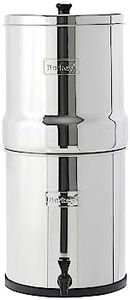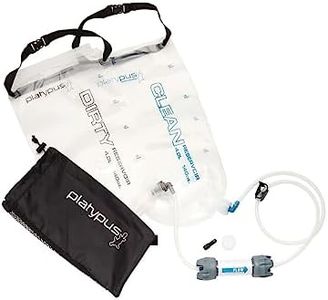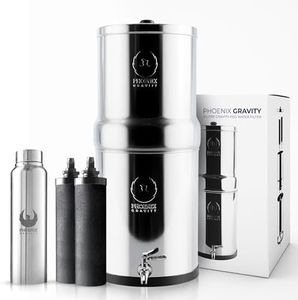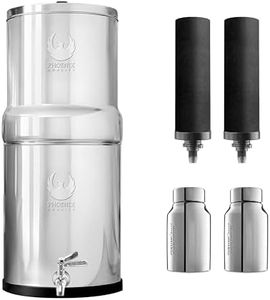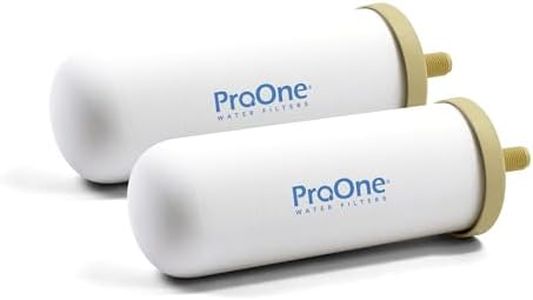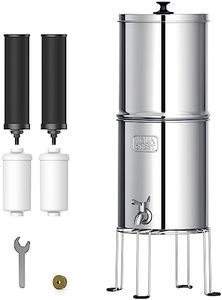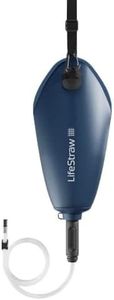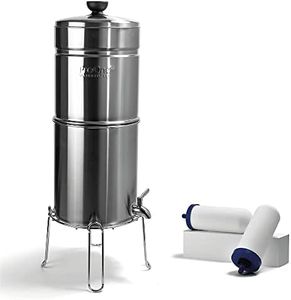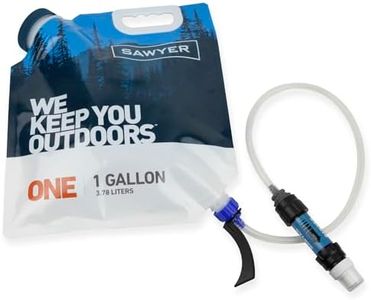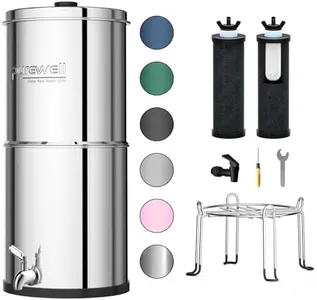We Use CookiesWe use cookies to enhance the security, performance,
functionality and for analytical and promotional activities. By continuing to browse this site you
are agreeing to our privacy policy
10 Best Gravity Filters
From leading brands and best sellers available on the web.Buying Guide for the Best Gravity Filters
Gravity filters are handy devices that use the force of gravity to move water through a filter, removing impurities and contaminants so that it’s safe to drink. They’re especially popular for camping, hiking, backpacking, and emergency preparedness because they don’t require pumps, electricity, or complicated mechanics. To pick the right gravity filter, you’ll want to pay attention to some key specifications that affect how the filter performs, how easy it is to use, and if it fits your intended use. Understanding each key feature will help you narrow your options and find a gravity filter that works best for your needs.Filter CapacityFilter capacity tells you how much water the filter can treat before the filter element needs replacing. It's important because it determines how long your filter will last, especially in situations where access to replacement parts is limited. Filter capacity usually ranges from a few hundred to a few thousand liters. If you only plan to use the filter for short trips or occasional use, a lower capacity might be fine. For frequent users or groups, or if you want a filter for emergency preparedness, you’ll benefit from a higher-capacity filter.
Flow RateFlow rate is the speed at which water passes through the filter, typically measured in liters per minute. A faster flow rate means you’ll get clean water more quickly, which can be crucial in group situations or when you need water urgently. However, higher flow rates can sometimes mean less thorough filtration depending on design. If you’re filtering water for just yourself, a slower system might be fine, but for groups or families, a higher flow rate is helpful to avoid waiting.
Pore Size (Micron Rating)Pore size, often listed in microns, indicates how small the filter holes are. This spec is important because it tells you what kind of contaminants the filter can remove. Smaller pores block more types of bacteria and protozoa, but might slow down the filtration. Most gravity filters are rated at 0.1 to 0.2 microns, which is sufficient for bacteria and protozoa. If you’re traveling where viruses are a concern, look for even smaller pore sizes or filters with additional virus protection. Your expected water sources should guide your choice here.
Weight and PackabilityWeight and packability refer to how heavy and bulky the filter is when packed. This is important if you’ll be carrying your filter on your back or packing it into a tight space. Lightweight and compact filters are easier to bring along on hikes, but might have smaller reservoir sizes or slower flow rates. If you’re car camping or setting up a base camp, a bulkier, bigger-capacity system can be more practical. Think about how and where you’ll carry your filter before picking one.
Reservoir SizeReservoir size is the amount of water the system can hold at one time. This matters because it impacts how often you have to refill the dirty water bag or reservoir. Smaller reservoirs (under 2 liters) are good for solo outings and short trips, while larger reservoirs (4 liters or more) make sense for groups or longer stays where you want less refilling. If you’re mainly traveling solo or with one other person, a smaller system is usually sufficient and lighter. For group camping, a larger size is more convenient.
Ease of Cleaning and MaintenanceEase of cleaning and maintenance describes how easy it is to take care of the filter. All gravity filters require occasional cleaning to work well, and some are easier to clean than others. Simple backflushing systems are good for field use, as they let you restore flow without special equipment. A filter that’s easy to clean will last longer and be less frustrating. If you’re new to water filters or expect to be filtering from murky sources, pick a model that’s straightforward to clean.
Types of Contaminants FilteredThis spec tells you what kinds of things the filter can remove from water, such as bacteria, protozoa, viruses, and chemicals. Some filters only tackle bacteria and protozoa, while others have elements like activated carbon to reduce chemicals, tastes, and odors, or additional stages to remove viruses. Think about the likely sources of your water and what might be in it—if it’s untreated wilderness water, bacteria and protozoa are usually the main concern. For travel in areas with questionable sanitation or where viruses might be present, choose a filter that covers those as well.
